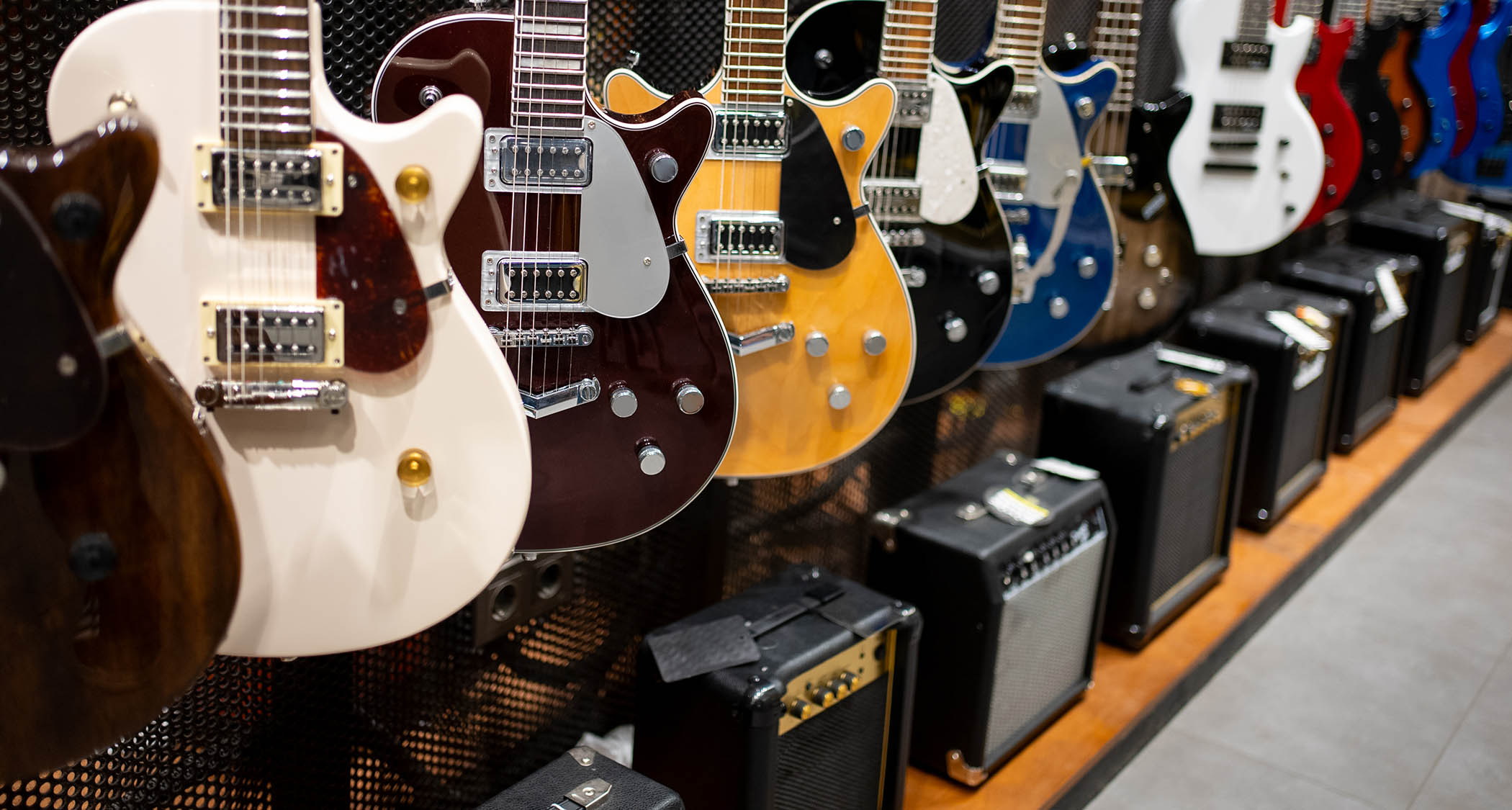“People would tell me, ‘Oh, you sound and play just like Eddie Van Halen.’ It got under my skin enough that I called Eddie”: Vito Bratta, one of the definitive ’80s shredders, looks back on a career of world-beating solos with White Lion
The legendary White Lion guitarist sits down for a rare interview to share the stories behind the solos, what it’s like to record with Jimi Hendrix’s Strat plugged into Leslie West’s Marshall, and why his recording career began with disappointment
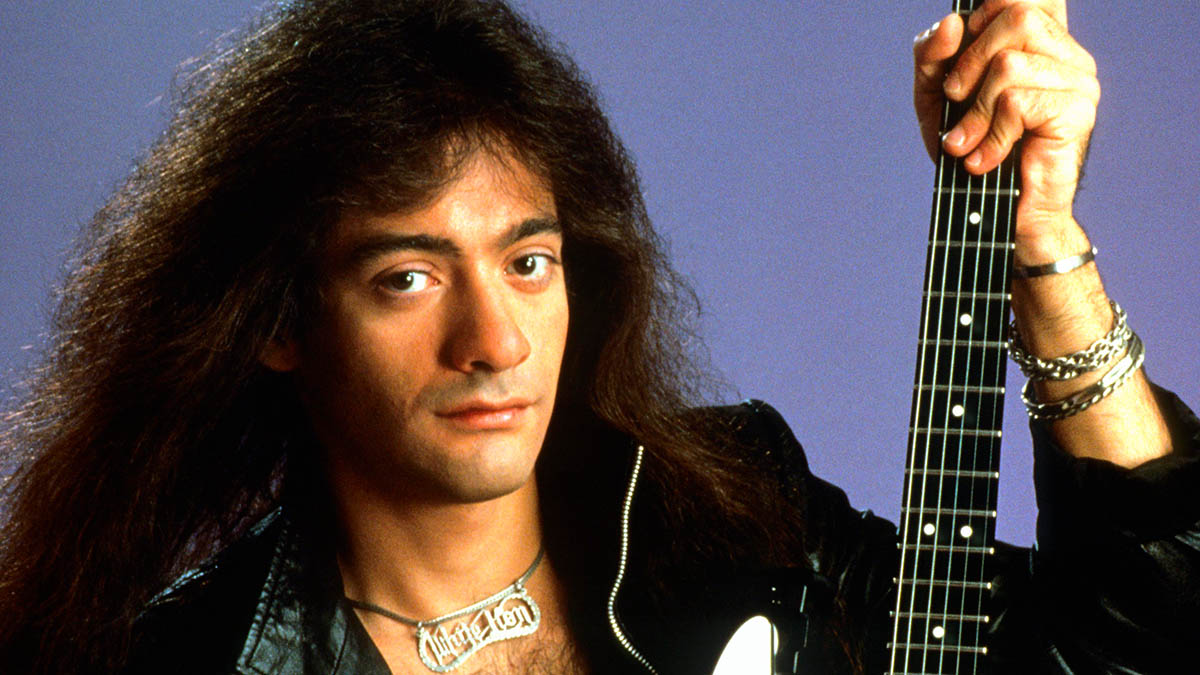
It’s 3:05 P.M. on a Friday. I’m waiting for a call from Vito Bratta. He’s late. Five minutes late, to be exact. But considering it’s taken years of knocking, followed by an additional three weeks of scheduling back and forth via email, to gain entry into the proverbial Casa di Vito… what’s a few minutes more?
A few nervous sips of Johnny Walker Blue later, at around 3:10 p.m., my trusty iPhone 10XR buzzes with anticipation; I’d used that old iPhone for countless interviews prior, but this one is different. The number scrolling across the screen is one I didn’t recognize. I mutter to myself, “That’s gotta be Vito...” It is.
“Sorry I’m late, man. I was dialing the wrong number for the last 10 minutes,” Bratta sheepishly says. “It’s funny, though; I’ve got nothing to do. I’m here all the time. I care for my mother full time and only venture out for a few minutes daily to run to the grocery store.”
The “here” Bratta refers to is the childhood home in Staten Island (one of New York City’s five boroughs), where Bratta still resides. Since the end-days of White Lion – when Bratta retreated from the “biz” – the ever-reclusive guitarist has been seldom heard from. Still, many rumors regarding Bratta have cropped up. Some are true – at least, on the surface – while others are bastardized versions of his post-glam-metal life.
Of course, Bratta has earned all the grace that he desires. Far be it from me to be bothered by waiting a few extra minutes. After all, I’d waited this long to dig into the solos that made Bratta – with his imaginative pop arpeggiations and blues-based, yet Van Halen-inspired bouts of slippery tapping – famously adored.
Indeed, in the years that followed Bratta’s exodus from our collective consciousness, talks of his exploits have unfurrowed in various directions. Some say he was the most inventive player to pick up a guitar in the ’80s. Others label him as nothing more than a clone of one Edward Van Halen. But Bratta isn’t having any of that. He never did – his influences were far more wide-ranging.
“That always bothered me,” Bratta says. “I read all of it back in the ’80s. Guys will say they don’t read people’s words, but I did. I remember seeing it in magazines, and people would tell me, ‘Oh, you sound and play just like Eddie.’ At one point, it got under my skin enough that I called Eddie. I won’t say all that Eddie told me specifically – I’ll take that to my grave – but I will say that he told me, ‘I love the way you play. We’re a lot alike, but you’re different. Remember that.’”
All the latest guitar news, interviews, lessons, reviews, deals and more, direct to your inbox!
I was 16 when I first heard Eddie play. Even though I knew next to nothing about anything, I knew that the guy re-wrote the book on guitar
If we look beyond the surface, Bratta’s words ring true; he was never a clone, a disciple, but not a clone: “I was 16 when I first heard Eddie play,” Bratta says. “Even though I knew next to nothing about anything, I knew that the guy re-wrote the book on guitar. And who do you think bought that book? If you guessed me, you’d be right!”
And so, when we look back on Vito Bratta, sure, we hear a player into whom Eddie Van Halen carved a deep musical river of influence. But go on, dig deeper. You’ll find a subtly blues-based maestro whose only aim was to chase perfection, with the knowledge that he’d never catch it.
“If we’re gonna talk about my solos, I’ll have to tell you my three triads of soloing,” Bratta says. “I’ve carried this method my whole life, and it’s never failed me. The first is that scales are not solos. Too many guys rely on scales for solos and end up using what I’ll call the ‘asshole scale.’ See if you can find that on the metronome.” [Laughs]
“The second is to always be accurate. I never met a player who liked what he did,” Bratta says. “Even though I would play for 12 hours a day and practice until my hands bled, I still hated everything I ever recorded. But that didn’t stop me from being accurate.
“And my last thing is that scales are a gift. The best songwriters know how to use scales so they aren’t lazy or repetitive. You don’t have to do crazy stunts or play fast to make a good song or be a good guitar player. Remember this: scales are a gift, don’t abuse them.”
People tell me all the time how good I was but it was never about that. I just loved to play guitar, and for most of my life, I’ve never been able to put it down
It wasn’t until a day or so later that the impact of my 120-minute call with Bratta hit me – I’ve revered the songs, desired his gear, coveted the technique and marveled at his blissfully dynamic solos. But what stuck out most was his humility. And that’s when I realized what Eddie Van Halen meant when he told Bratta he was “different.” As unfathomable as Bratta was as a player, he never took it for granted for a single day. It was that mindset that gave Bratta the Midas touch.
“People tell me all the time how good I was,” Bratta says. “But it was never about that. I just loved to play guitar, and for most of my life, I’ve never been able to put it down. Things were different after my injury, but within the last year, I’ve re-learned all my White Lion solos – which was fucking tough – and I went from only being able to play for a few minutes at a time with extreme pain to being able to play for two or three hours straight.
“I got tired of the business back then,” Bratta says. “But rock is still where it begins for me. I love them, but I only venture off into classical and jazz when I get bored with the rock stuff. I’m thankful to be able to play and even more thankful to be talking with you today. After all these years, I’m glad someone still cares about what I did. I’m just happy to be remembered.”
Before Kurt Cobain dismantled the citadel of virtuoso guitar, few – if any – did it better. Of course, we remember you, Vito. How could we not?
I first wanted to start with a couple of songs from Fight to Survive –
“What a fucking disaster that record was. Can I tell you something about that record that most people probably don’t know?”
Of course. Let’s hear it.
“That whole album is scratch tracks. None of it is what it was supposed to be. I laid the scratch guitars down, and then the producer Peter [Hauke] told me, ‘OK, Vito, that’s good for now. We’ll have you come back in and finish the guitars when the rest of the album is done.’ So, I’m thinking, ‘OK… I guess I’ll redo these and put the polish on after.’
“See, I was a dumb kid. I knew nothing. I’d never been in a recording studio. And now, I’m in Germany with this bald guy yelling at me. I won’t say I was scared, but I wasn’t going to question him.
“Long story short, Mike [Tramp] finishes his vocals, and Peter tells me, ‘We’re done. You can go home now.’ And I’m like, ‘What about the guitars?’ Peter just looked at me and said, ‘Sorry. We ran out of money and time. We’re going with what we’ve got.’ I was devastated. I couldn’t believe a bunch of shitty scratch tracks would be my first record.”
What can you tell me about the solo for All the Fallen Men?
“Nothing. I don’t remember shit. It was 40 years ago. Just kidding. [Laughs] I remember hating all the shitty power chords because they were scratch tracks. That was just a case of me playing whatever I felt then. There was no thought behind it beyond tearing it up because I thought I could do it for real later.”
I assume it was the same for All Burn in Hell.
“It was. You have to remember I had nothing going into Fight to Survive. White Lion hadn’t been together for that long. There were no years of playing together to put things together in clubs. We formed the band in ’83, and within months we were somewhere in Germany recording an album.
“I had maybe rehearsed whatever in someone’s garage or basement, but nothing beyond that. So with that song, I just pressed 'record' and let it rip. What’s on there is me playing whatever I felt, having no idea that it would live on forever as what people would hear.”
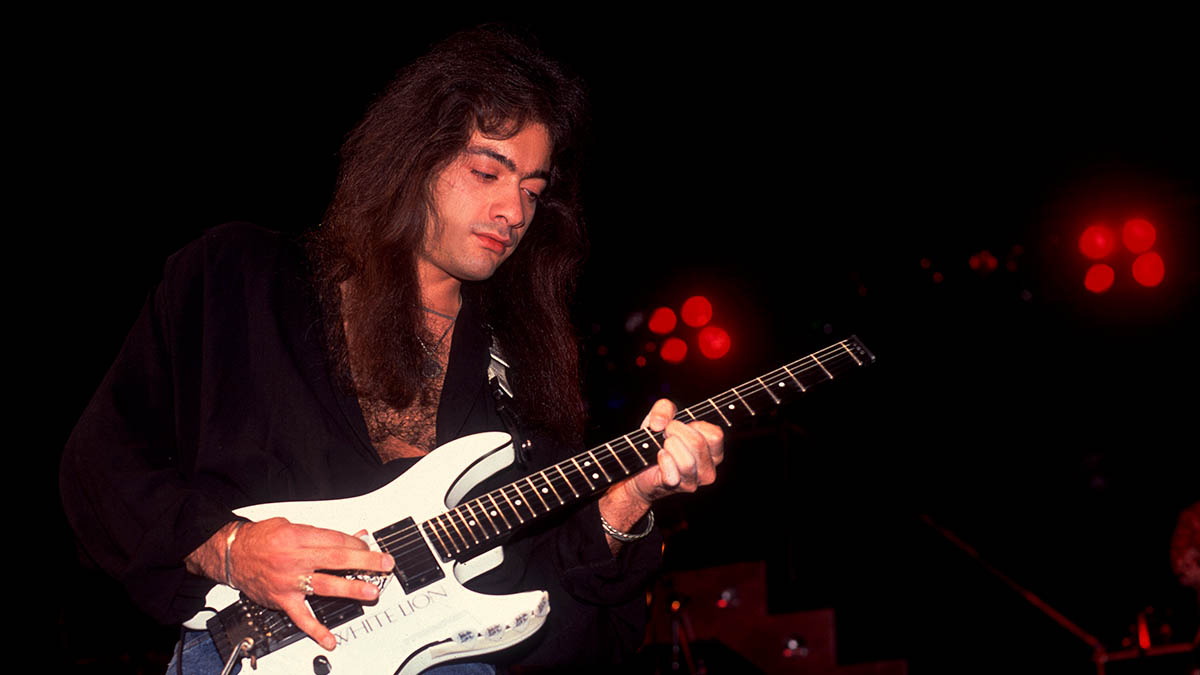
Do you remember what guitars and guitar amps you used?
“I know I had the ’79 Strat that I installed a Seymour Duncan JB pickup on. And I had one of the original Floyd Roses installed on that guitar, too. And when I say it was ‘original,’ I mean it was a prototype. When Floyd Rose made those, Joe Perry got number one, and I got number two.
“As for the pedals, a chorus was, unfortunately, all over Fight to Survive. I later learned that Randy Rhoads would double and triple-track everything. I did that later, but at the time, I just relied on the chorus pedal. And the amps I used were old 100-watt Marshalls. I didn’t want to worry about the amp blowing up, so I went with the biggest Marshall I could find.”
I did everything on Pride live and in one take
Given what you’d been through recording Fight to Survive, how did you approach Pride from a soloing perspective?
“When I got in there with the producer, Michael Wagener, he told me from the beginning, ‘Don’t do what got you in trouble in Germany. You never know if you’ll run out of time; play the solos the way they’re supposed to be played the first time.”
“That’s when I started sweating. And Michael looked at me and said, ‘Vito, play the songs the way you’d play them live. Don’t worry about the bottom falling out when you go into the solo; play the solo.’ So I did everything on Pride live and in one take.”
Tell me about the solo for Wait.
“As far as the technicalities are concerned, I don’t remember much. But I can visualize myself standing there and holding that same ’79 Strat. By this time, I’d worn the frets off. And I was broke, which meant that thing was staying fretless.
“I remember Michael saying something about fucking with the levels, and then he had me plug into this small rack-mounted amp we called ‘The Chevy’ because of the red paint job.
“This was not the type of amp I’d usually want to mess with, but he told me to plug in and play it as I would if it were live. So I did one pass; Michael stopped me, called me in and said, 'Go home. You’re done.'
“I didn’t believe him and demanded to listen back so I could listen back for mistakes. I looked for flubs or wrong notes, but there weren’t any. I was shocked that Michael didn’t want me to do it 20 times. That’s when I learned that having the right mindset was all I needed.”
How about Lady of the Valley?
“I’m glad you brought that one up because it’s a favorite of mine. I always loved Jimmy Page; he was my number one. You might not hear it in my playing at face value, but it’s in there.
“I had the classic Jimmy Page alternation between acoustic and electric, which influenced the solo. If people had just left White Lion alone, Lady of the Valley is the type of music we would have made.
“The other stuff came about only when people convinced us we 'needed a hit.' But I didn’t care then, so I said, ‘I wanna do it this way. What do I care?’ I cared about later albums but didn’t on the first two. So Lady of the Valley is an example of White Lion’s original concept.”
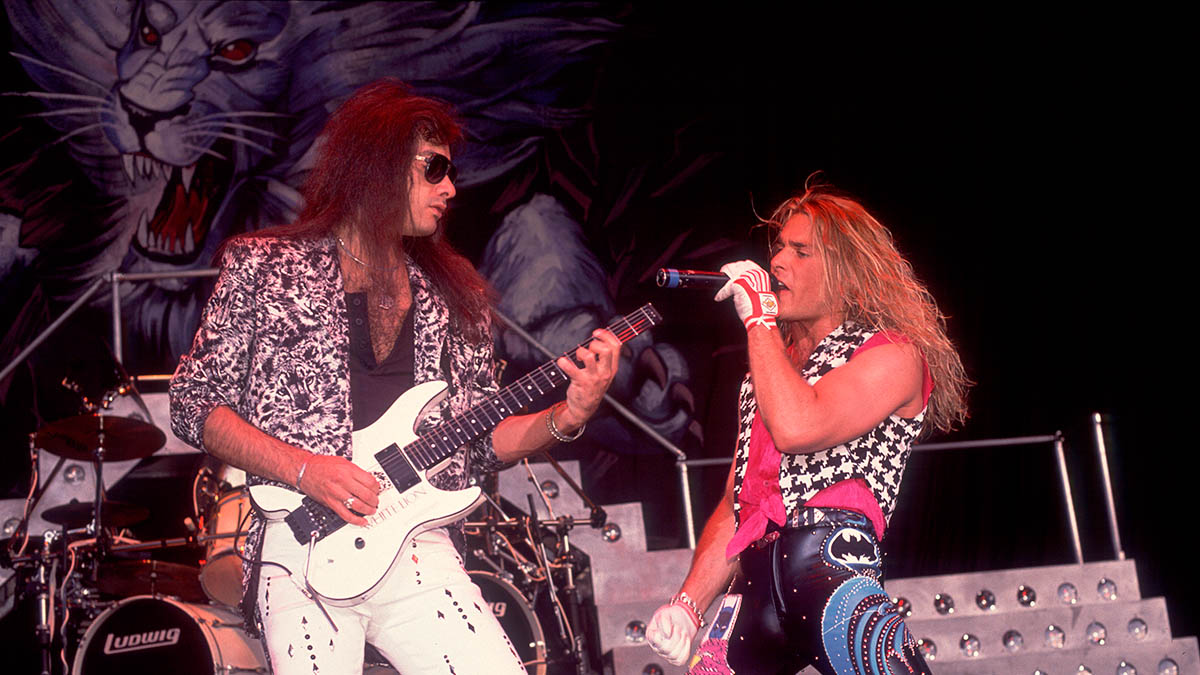
How did you approach Hungry?
“To me, there’s nothing special about Hungry. I just played whatever and went for it. And when I listened back, I hated it. But I hated everything I did. That’s just the way it was. I don’t think the Hungry solo is as good as it’s made out to be. If you want to talk about a good solo from Pride, I’d point you toward All You Need is Rock ’n’ Roll.”
Fair enough. Tell me about that one!
“Number one: I recorded the entire solo for that song with Jimi Hendrix’s black Stratocaster.”
To me, there’s nothing special about Hungry. I just played whatever and went for it. And when I listened back, I hated it
How did that come about?
“There’s a keyboard player called Al Kooper, who played with everybody, including Hendrix. Hendrix gave Al Kooper his black Strat somewhere along the way, so he had it. Al was working with us in the studio on Pride and was listening to me practicing the All You Need is Rock ’n’ Roll solo.
“I guess he realized I didn’t have a neck pickup in my Strat, and suddenly, Al goes, ‘Hold on, Vito, let me get you something.’ He leaves, comes back and pulls out Jimi Hendrix’s guitar. I knew what it was the second I saw it, and again, I’m just a kid, so I’m in awe of this thing.
“So Al goes, ‘Plug it in. Play it, Vito.’ Long story short, I used Hendrix’s black Stratocaster to record the solo for All You Need is Rock ’n’ Roll. When I listen back to the record, I can hear the classic Hendrix sound all over that song.”
Did you use the same Marshalls on Pride?
“I was plugged into an old Marshall, but it wasn’t the same one from Fight to Survive. But Pride was an old 100-watt Marshall, and you’ll never guess whose it was. Go ahead, guess.”
It would be too easy to guess Hendrix. I have no idea…
“I used Leslie West’s 100-watt Marshall. But not just any old Leslie West Marshall; it was his favorite. This was the same amp he used to record all those classic Mountain songs. So I’m a kid with Jimi Hendrix’s Strat plugged into Leslie West’s Marshall.
“I’m proud to say I still own that amp. But it was so crazy that I was almost waiting for Jimmy Page to stroll in and say, ‘Hey, do you need any of my gear, too?’ It was just crazy. And in all honesty, I was too young to grasp it fully. Oh, and I guess you’re wondering about pedals, right? I didn’t use any. I just went with the Stratocasters plugged straight into a Marshall the whole way.”
It doesn’t sound like only a Stratocaster plugged into a Marshall on the Big Game record.
“You’re right. Between Pride and Big Game, White Lion went on a tour with Aerosmith playing arenas. And my lead singer, Mike, didn’t want any guitars in his monitors. So, suddenly, these 100-watt Marshalls – which I had three of – weren’t cutting it because my cabinets were buried underneath the stage.
“I had to do something to counter that and went with a [1,000-watt] Carvin DCM 1000 Power Amp. I got used to that sound, and I ended up bringing that into the studio. Along with that came a new guitar, the white Steinberger GM2S. Like you said, that’s an entirely different world from a Strat plugged into an old Marshall.”
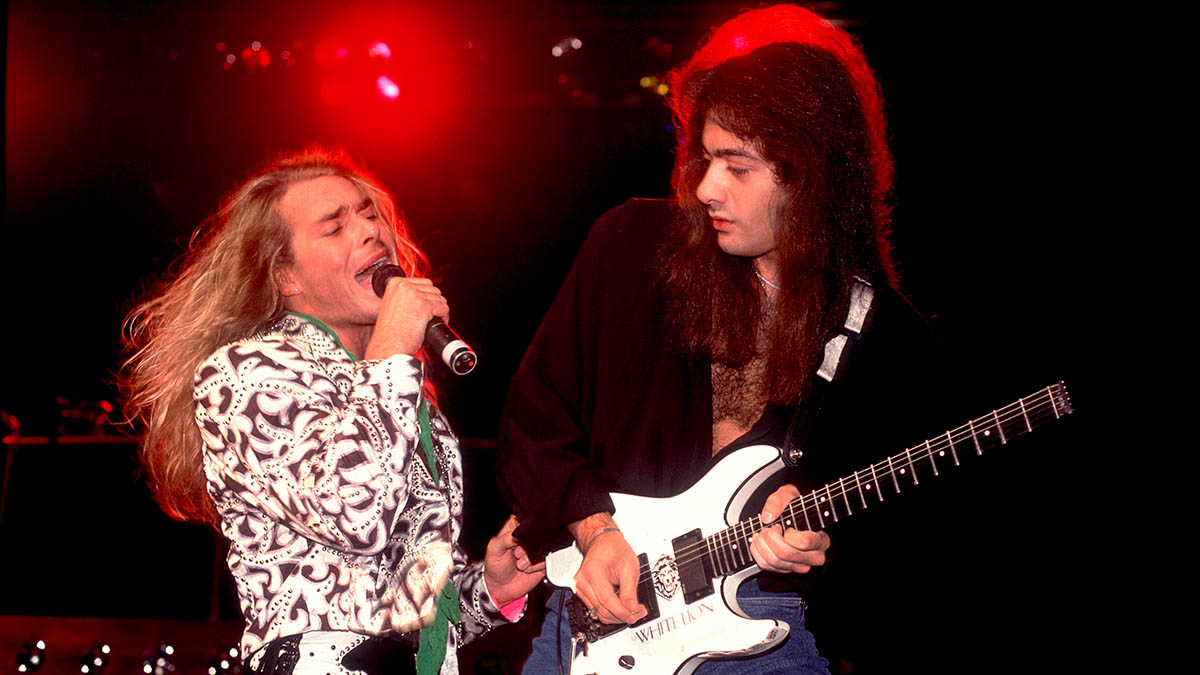
How did that manifest on Little Fighter?
“I got the DCM dialed in to where it sounded a lot like my Marshalls. Still, some people can pick out the differences in the mid-range. I read the comments that said I sounded different, and I thought, ‘Yeah... it does sound different, but it doesn’t sound bad…’ So I had that going on with Little Fighter. And I remember that solo being one of those things where I needed to sit down and take a breath when I finished.
“I literally held my breath for the entire time I was playing it. It was technical and had a massive amount of definition. If I had to pick out one word to describe that solo, it would be ‘articulation.’ When I played my solos, I had to make sure every note was crystal clear, which made playing live a bitch. Going on stage in an arena where 20,000 people were screaming was like, ‘Guys, shut up. I can’t hear what I’m playing.’ [Laughs]”
Going into Mane Attraction, was it your goal to make a more heavy and mature-sounding record?
“Honestly, no, not at all. I mean, it is a more mature record, but that was a by-product of getting better as songwriters. Beyond that was entirely accidental. I guess having a guy like Richie Zito producing helped with that, though. He was a very professional guy.
“Whereas Michael Wagener was more like one of the guys. Michael’s attitude was, ‘Come on, go for it. What the fuck, pussy? Just go for it.’ If I broke a string in the middle of the solo, he would say, ‘So what? You’re stopping over that?’ But Richie had to be perfect.
“He still let me be me, but if I broke a string in the middle of the solo, Richie would say, ‘Let’s redo it.’ Whereas Michael would say, ‘Leave it in. It’s a great solo. Leave it alone.’ We had been flying by the seat of our pants, and Richie brought some professionalism to the table.”
Did you go back to the Stratocaster and Marshall for Mane Attraction?
“I think Mane Attraction was the same as Big Game. I remember using some ESPs occasionally, but it was a lot of Steinberger guitars. I didn’t have the ’79 Strat in my arsenal anymore. That guitar had gotten me through the club days and all my youth.
“I learned to play on that guitar. I became me on that guitar. I used it all through Fight to Survive and Pride, and after I finished the last song on Pride, I took the ’79 Strat, laid it in its case and flipped the lid shut. And me and Michael were talking, and suddenly, I heard a loud ‘ping,’ and I knew right away… the Strat was done.
“I opened the case and found that the bridge posts that held the Floyd Rose to the guitar had collapsed entirely through the wood and into the JB pickup. I thought the guitar was ruined, so I sent it home. That’s part of the reason I went to Steinberger and ESP. So I would say most of Mane Attraction was recorded with my white Steinberger.”
You seemed to eschew pedals after White Lion’s first record. Why?
“Aside from the first record – which I hated – I’ve never used effect pedals. Not ever. I didn’t use a single pedal on Mane Attraction, except for a wah on one song, but I can’t recall which. Other than that, I don’t remember using them ever.
“Well, I shouldn’t say that – I’m sure one of my guitar techs put a reverb or something out there when we played live, but for the most part, after that experience of having Fight to Survive drenched by that chorus pedal, I never wanted to use pedals again. They were always a pain in the ass with the cords coming out and were generally annoying.”
Knowing what I know now regarding the first record, I can see why you chose to re-record Broken Heart.
“You’d think that, but honestly, it goes beyond me hating the scratch guitars on Fight to Survive. The record company felt that Broken Heart could be a hit. So they wanted us to do it again, and yeah, given what I went through the first time, I was happy about that.”
How did you approach the solo the second time around?
“I had to try and wash away what I knew about the first version, so I kept it simple. I just plugged in and played a solo that felt good. I did compose something, but what I mean is that I tried not to overthink the whole thing.
“And the truth is, if you want to get Richie Zito pissed the fuck off, all you have to do is come into the studio unprepared. When you’re in a $1,500-an-hour studio, and you’re getting ready to do a solo, and you tell Richie, ‘Give me a few takes,’ he’s going to rip your head off.
“So I always had something ready, but unlike Pride and Big Game, I adopted the mindset: ‘This doesn’t have to be perfection.’ I wanted the emotion to come out. So I took what I’d prepared, worked off it and then played off the cuff.”
Was the approach the same for Warsong?
“That was as simple as could be. Richie approached me and said, ‘Vito, we’re doing guitars tomorrow. Be there.’ And I came in, laid it down in one take, and then we went to dinner. [Laughs] I never did any solo in my career in more than one take.
“The only exception to that rule would be if something stupid happened, like a glitch with the equipment. Otherwise, I’d plug in and put myself on autopilot. There were a lot of situations where I did half the album or almost the whole album in one day, and then we just went out for dinner.
“I heard the stories of other guitar players out in California that would waste time doing 25 takes and then piece them together with the best parts. I thought that was total bullshit. So every solo you hear is me playing straight in one pass, start to finish. Nobody was going to create my solo from a bunch of parts. No way.”
Aside from what we’ve discussed, is there one solo you feel stands out most from your career with White Lion?
“Like I said before, I hated everything back then. But I’ve never met a guitar player who liked anything they’ve recorded, so I don’t think I’m being too tough on myself. But my favorite solo comes off the Big Game record from Baby Be Mine. It was a rare instance that I thought the solo came out great when I listened back.
“It freaked me out how it came out because it sounded like I used a delay unit, but I didn’t. I just overdubbed it a million times. I did the solo, and I remember them saying, ‘OK, we’re gonna use the machine to make it sound different,’ I was like, ‘Screw that.’
“And I went into the studio on an off day and recorded all these delays myself. All the delays did different things; some bent up instead of bending down. So it’s not a delay machine. It’s different guitar parts added in by me afterward. It came out so good, and for once, I loved it.”
Andrew Daly is an iced-coffee-addicted, oddball Telecaster-playing, alfredo pasta-loving journalist from Long Island, NY, who, in addition to being a contributing writer for Guitar World, scribes for Bass Player, Guitar Player, Guitarist, and MusicRadar. Andrew has interviewed favorites like Ace Frehley, Johnny Marr, Vito Bratta, Bruce Kulick, Joe Perry, Brad Whitford, Tom Morello, Rich Robinson, and Paul Stanley, while his all-time favorite (rhythm player), Keith Richards, continues to elude him.

